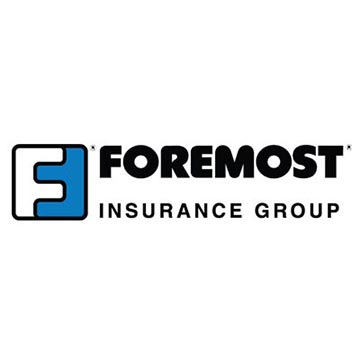Does Faulty Workmanship Qualify as an Occurrence
A question asked, and tried to be answered, in many different courts! Numerous articles have been written and rewritten, along with state and federal court decisions, that all address the same question: Is faulty workmanship an occurrence?
Start a Quote Online Find an Agent
A question asked, and tried to be answered, in many different courts! Numerous articles have been written and rewritten, along with state and federal court decisions, that all address the same question: Is faulty workmanship an occurrence?
First, some basic guidelines before trying to look at possible answers or solutions: "Occurrence": Typically defined as "an accident, including continuous or repeated exposure to substantially the same general harmful conditions." This definition is given in the CG 0001 12/04-ISO Properties, Inc. 2003. "Accident", while not defined in the same CGL, and using its most commonly accepted meaning, or in its ordinary or proper sense is, "an occurrence or event, a fortuitous circumstance, event, or happening." Black's "fortuitous" means "happening by chance, or accidental, occurring unexpected, or without known cause."
To find coverage in the CGL for an event, we must first follow a very basic coverage concept! Begin at the beginning-with the insuring agreements. Leave the policy exclusions, exceptions or conditions until you determine if the loss even qualifies for coverage based on the insuring agreements. The opening sentence of the CGL Insuring Agreement states: "We will pay those sums that the insured becomes legally obligated to pay as damages because of "bodily injury" or "property damage" to which this insurance applies." Further, "(b). This insurance applies to "bodily injury" or "property damage" only if: (1) The "bodily injury" or "property damage" is caused by an "occurrence" that takes place in the 'coverage territory', (2) The "bodily injury" or "property damage" occurs during the policy period." There are more provisions within the insuring agreement, but the above will give us enough of a basic guideline to attempt to explore possible answers to the question.
As a general rule, with a few exceptions, defective workmanship that causes "property damage" to something other than the insured's work product, is covered! A majority of courts have held that defective workmanship, standing alone, which results in damage solely to the insured's completed work product, is not an accident, an hence, not an "occurrence". The Arkansas high court takes the position in a different direction: Their rational: "Faulty workmanship is not an accident; instead, it is a foreseeable occurrence, and performance bonds exist in the marketplace to insure the contractor against claims for the cost of repair or replacement of faulty work."
State and federal courts are divided on the question of faulty workmanship being an occurrence. Montana generally agrees that faulty workmanship is an occurrence. "Revelations Industry v St. Paul Fire & Marine (Sup.Ct.2009) " and "Portal Pipeline Co. v Stonewall Ins. Co.(Sup.Ct.1993)" both are listed as case citations. However, a more recent lower court decision, "King v State Farm (Mont. 2010)"-held "no occurrence". In my opinion, however, there seemed to be circumstances involved in that case that possibly relied on the "Expected or Intended Injury" exclusion. The basic point of the case held "that a claim against a seller of a log home kit, for misrepresentation about the quality of the logs and "refusal to correct deficiencies did not allege an "occurrence". (The 'refusal" possibly triggered the "intentional or expected" exclusion).
Assuming that the contractor's work has qualified as an "occurrence because such outcome was not the plan, design, or intent, we now run into a problem further within the CGL. The "Exclusions"! The courts will now conclude that, despite the existence of an "occurrence", damage that is solely to the insured's completed work product is nonetheless excluded from coverage on account of the policy's so-called "Your work" exclusion. This states: "property damage to your work arising out of it or any part of it and included in the products-completed operations hazard" is excluded form coverage. However, if the courts have allowed the issue to evolve to the "your work" exclusion, that exclusion also contains what is commonly referred to as the "subcontractor exception". The exception provides: "This exclusion does not apply if the damaged work or the work out of which the damage arises was performed on your behalf by a subcontractor". An important note on the provision: make absolutely certain the CGL policy does not contain either of these exclusion endorsements: CG 2294 10/01-Exclusion-Damage to Work Performed by Subcontractors on Your Behalf" or CG 2295 10/01 Exclusion-Damage to Work Performed by Subcontractors on Your Behalf-Designated Sites or Operations". Either one will make the subcontractor exception useless! Another point to address when looking at the "your work" exclusion, is exclusion "J"-"Damage to Property", Subpara. (5) . This part excludes "that particular part of real property on which you or any contractors or subcontractors working directly or indirectly on your behalf are performing operations, if the 'property damage' arises out of those operations" Thus, only "that particular part" in the care, custody, or control is a matter of exclusion J. Carefully review how a claim is presented to the insurer!
Last, a few states have found ways to make sure faulty workmanship is recognized. In 2010 the Colorado General Assembly enacted a provision that declared: "In interpreting a liability insurance policy issued to a construction professional, a court shall presume that the work of a construction professional that results in property damage, including damage to the work itself, or other work, is an accident unless the property damage is intended and expected by the insured". Apparently this Act (see C.R.S.A. 13-20-808) was in direct response to a particular Court of Appeals decision in "Gen. Sec. Indem. Co. of Ariz. V Mountain States Mut. Cas. Co. 205P.3d 529(Colo.Ct.App 2009). Hawaii, Arkansas and South Carolina have all adopted similar legislation addressing the workmanship exclusions in the CGL.
Legislating insurance coverage changes and policy terms has been something that has been happening for many years, and is a necessary action. However, the construction industry, now at an eight-year high after the economic slump, is a market that many standard insurers are taking a close look at. Because of the threat of huge losses, condominium projects and larger housing developments are not as readily acceptable to standard carriers as in the past. Thus broad attempts to force coverage areas on insurers through legislation can have adverse effects. Standard markets dry up! The E & S carriers, with their proprietary forms are the only markets available for many construction related risks. The agent must thus take special care to review each proposal of insurance along with every form that will be attached to the final policy. The exclusion endorsements mentioned above are ISO-standard carrier forms. Just think what an E & S market can bring to the table!!!
Article By: Dennis Gambill - The author is an Insurance Litigation consultant. Adjunct professor at EMC for 8 years-Risk & Insurance. 40+ years-both MGA and agency experience.

We'll Shop Around So You Don't Have To
Start a quote by filling out our online application providing us with the basic information we need to perform a quote. It only takes a few minutes and we'll respond within one business day.
Start a Quote Contact UsTop 10 Reasons You Need Cyber Liability Insurance
No matter what type of business you run, where you’re located, or how much time you spend online – your business needs Cyber Liability Insurance.
business riskProfessional Liability Insurance
Almost every business or firm can become liable for injury to others resulting from a condition on its premises or arising out of its operations, products, completed work or actions of its employees.
business riskAnti-Indemnity Statute
Indemnity clauses generally are more common to construction projects primarily due to the risks involved maintaining a safe work environment.
business riskOur Insurance Partners











— Protecting Everything You Value Most —
Darnielle Insurance is available to answer your questions. We are located at 1320 28th Street West, Billings, MT 59102. Give us a call at 406-652-4180.